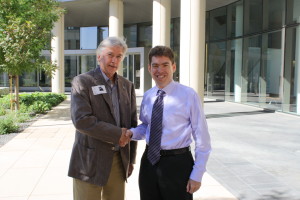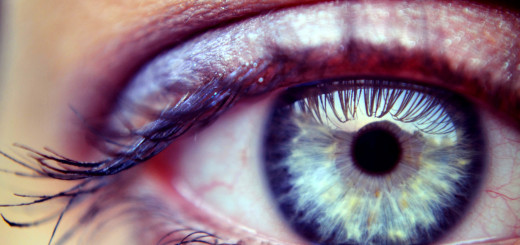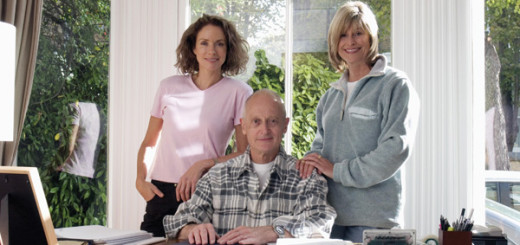Research Grant Just Awarded!
I’m pleased to share with you that the Alzheimer’s Association presented a research grant check to Gil Rabinovici, M.D., neurologist at the University of California at San Francisco. Dr. Rabinovichi has received support from the Alzheimer’s Association since the very beginning of his career. He’s a great example of how research funding from the Alzheimer’s Association fosters young scientists and provides the opportunity to make a foothold in the industry.
The Alzheimer’s Association awarded this grant to fund Dr. Rabinovici’s study Imaging and CSF Biomarkers in the Diagnosis of Early-Onset Dementia.
Here’s some background to help you understand the goal of his study:
- Amyloid plaque in the brain is one of the characteristic features of Alzheimer’s disease.
- Scientists can see amyloid plaque in people’s brains through positron emission tomography (PET) imaging of the brain.
- Researchers are exploring how to measure molecules related to Alzheimer’s disease in the fluid that surrounds the brain, known as the cerebrospinal fluid (CSF). These biomarkers may eventually be used to diagnose the disease.
One of the greatest challenges for both imaging and biomarker tests is to distinguish between Alzheimer’s disease and other types of dementia, such as frontotemporal dementia. Dr. Rabinovici’s lab will conduct a study to assess use of CSF biomarkers and PET brain imaging to distinguish between early-onset Alzheimer’s disease and frontotemporal dementia. Early-onset Alzheimer’s disease occurs before age 65 and is difficult to distinguish from frontotemporal dementia.
The researchers plan to enroll 40 people with either early-onset Alzheimer’s disease or frontotemporal dementia and perform brain imaging and measurements of CSF biomarkers. The researchers will assess how each technique improves the accuracy and reliability of diagnosis, as well as the ability to distinguish between Alzheimer’s disease and frontotemporal dementia. These studies will provide valuable information about the reliability of PET brain imaging and CSF biomarkers for the diagnosis of dementia in people younger than 65 years.
Helpful information related to this story:



















” support from the Alzheimer’s Association since the very beginning of his career. He’s a great example of how research funding from the Alzheimer’s Association fosters young scientists and provides the opportunity to make a foothold in the industry.”
Where does the Alzheimer’s Association get the money that they give out in the form of “grants”?
Where is D. Michael Kessler and his research, why has it been impossible for one to find his research on Alzheimers and his little sugar pill?